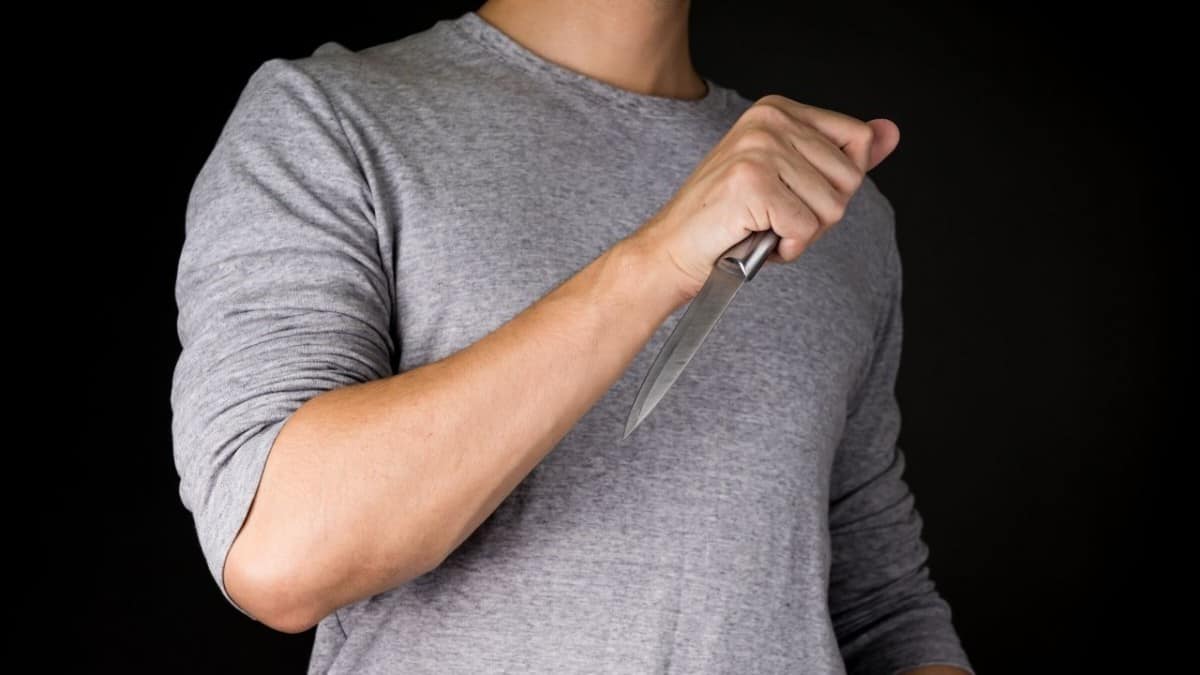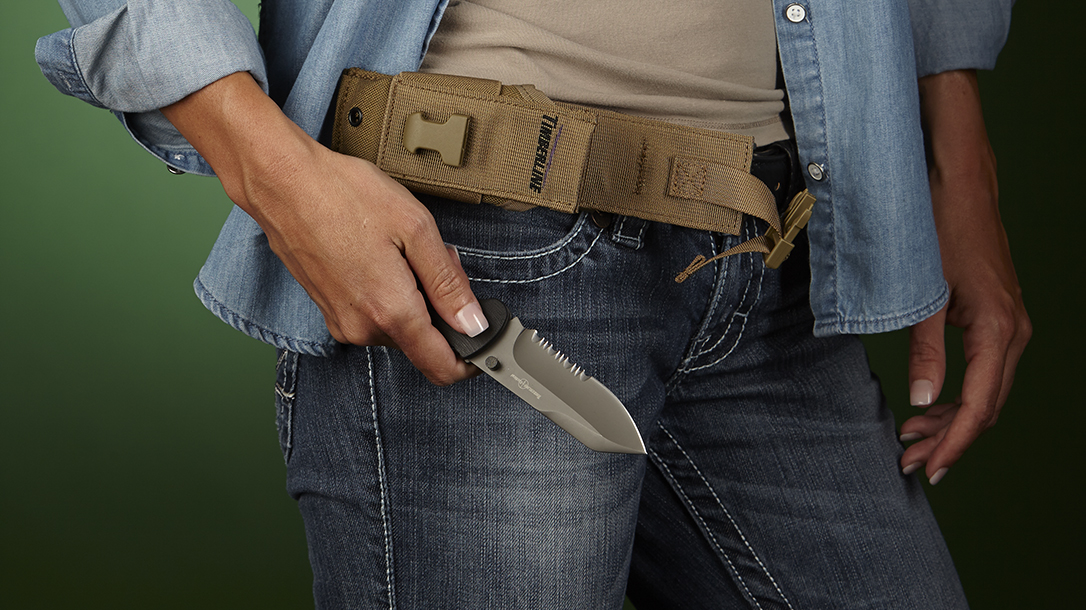I. Introduction
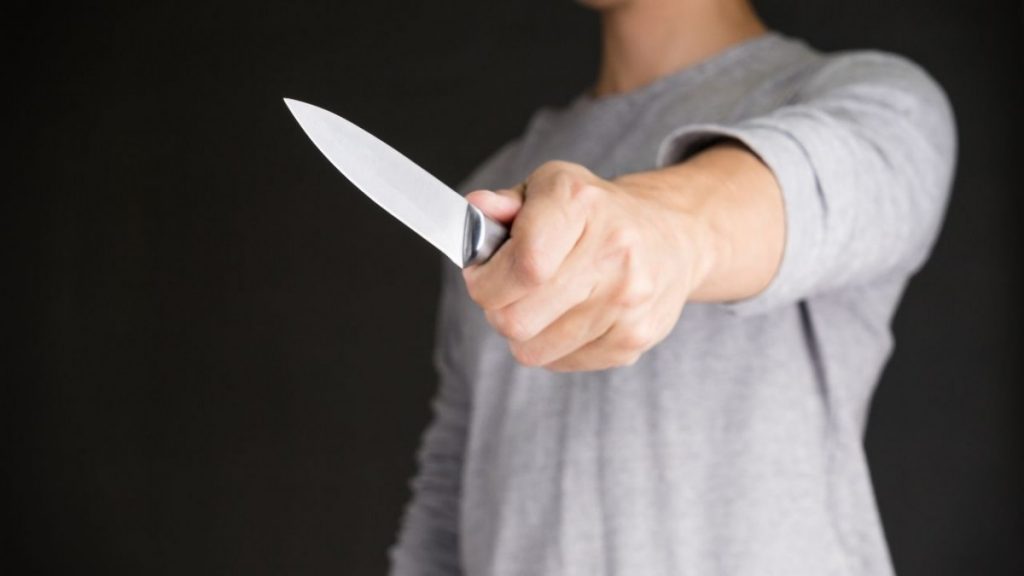
A. Importance of knife defense skills in personal safety
In today’s world, personal safety is a top priority. Understanding and developing knife defense skills is crucial for protecting oneself in dangerous situations. Whether it’s defending against a potential attacker or diffusing a threatening scenario, having the knowledge and skills to handle a knife safely and effectively can be a valuable asset.
B. The significance of proper knife handling techniques for self-defense
Handling a knife with precision and control is essential in self-defense situations. Proper knife handling techniques not only improve the effectiveness of offensive maneuvers but also enable individuals to defend themselves against potential threats. By understanding the fundamentals of knife grips and defensive techniques, individuals can enhance their personal safety and confidence in challenging situations.
II. Understanding Knife Grips
A. Importance of a firm grip and control over the knife
- Holding the knife securely to prevent slippage
When engaging in self-defense with a knife, maintaining a firm grip on the handle is crucial. A secure grip reduces the chances of the knife slipping or being disarmed during confrontations, ensuring that the individual has control over the weapon at all times.
- Maintaining control during offensive and defensive maneuvers
A proper grip allows individuals to execute offensive and defensive maneuvers effectively. It provides stability and control, enabling precise strikes and quick defensive actions.
B. Different types of knife grips and their applications
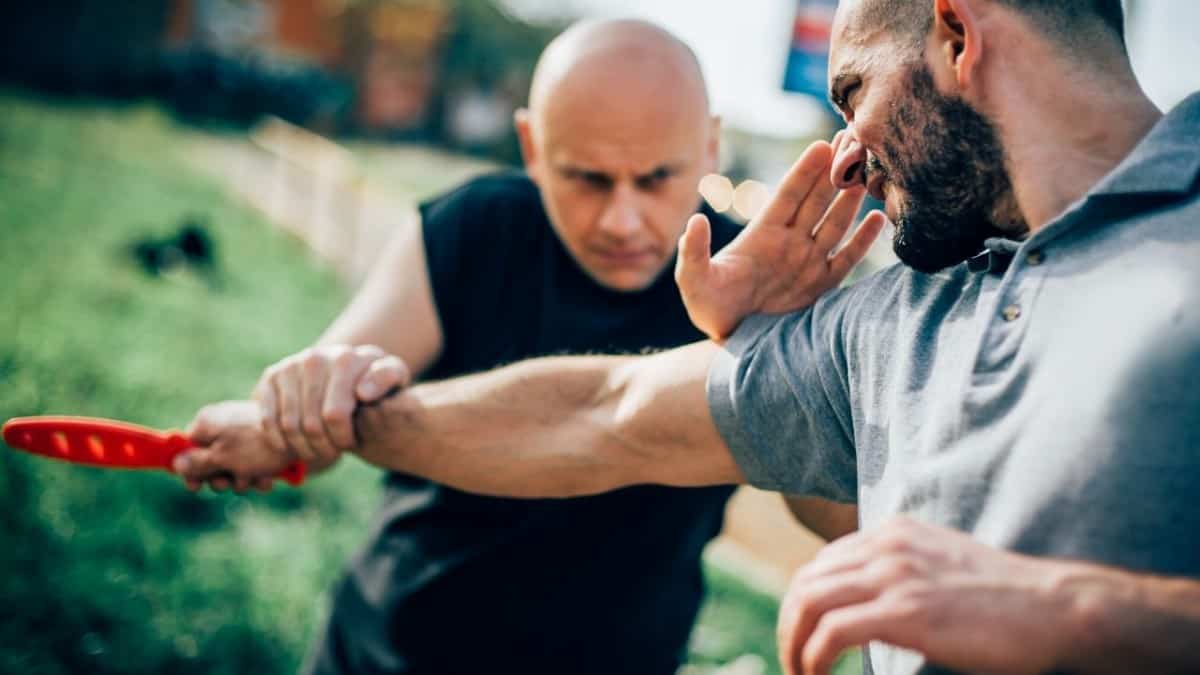
- Hammer grip for power and stability
The hammer grip is a commonly used grip that provides power and stability when striking or blocking. It involves gripping the knife handle firmly with all fingers wrapped around it, creating a strong and solid hold. This grip allows for forceful strikes and effective blocking techniques.
- Ice pick grip for precision and quick strikes
The ice pick grip is suitable for precision strikes and quick movements. It involves holding the knife handle with a clenched fist, positioning the blade vertically like an ice pick. This grip allows for controlled and accurate thrusts, making it ideal for close-quarters combat.
- Reverse grip for close-quarters combat
The reverse grip is primarily used for close-quarters combat, enabling individuals to defend themselves in tight spaces. It involves holding the knife handle with the blade extending backward from the hand. This grip provides versatility in defensive movements, allowing for swift slashing motions and surprise attacks.
III. Defensive Techniques
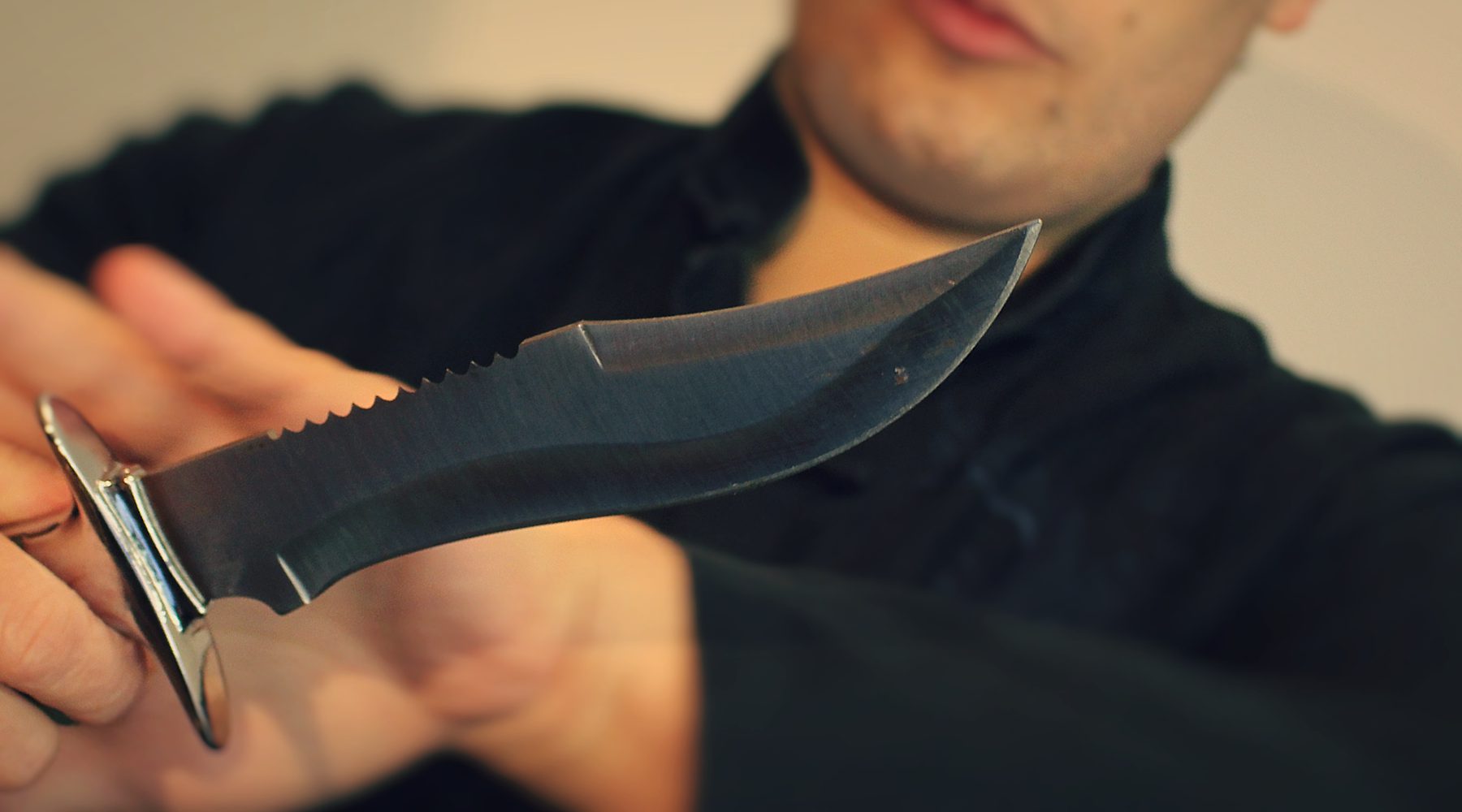
A. Creating distance and de-escalation
- Recognizing signs of danger and assessing the situation
When faced with a potential threat, it is crucial to assess the situation and recognize any signs of danger. This awareness can assist in making informed decisions and taking appropriate defensive actions.
- Verbal and non-verbal methods to diffuse a potential threat
De-escalation techniques play a vital role in self-defense. Effective communication, combined with non-verbal cues such as maintaining a defensive stance, can deter potential attackers or diffuse hostile situations without physical confrontation.
B. Blocking and parrying attacks
- Understanding different angles of attacks
Recognizing the different angles from which an attacker may strike is essential in defensive knife techniques. Understanding the most common attack patterns allows individuals to anticipate and counteract such moves effectively.
- Utilizing knife-handling skills to block and redirect strikes
With proper knife-handling skills, individuals can block and redirect an attacker’s strikes. Techniques such as parrying or using the knife as a shield can create openings for counterattacks or create opportunities to disengage from the situation.
- Importance of using non-knife limbs for defense
While it is important to have knife skills for self-defense, relying solely on a knife can be risky. Utilizing non-knife limbs, such as open palms or kicks, can provide additional defense and create space to escape an attacker.
IV. Offensive Techniques
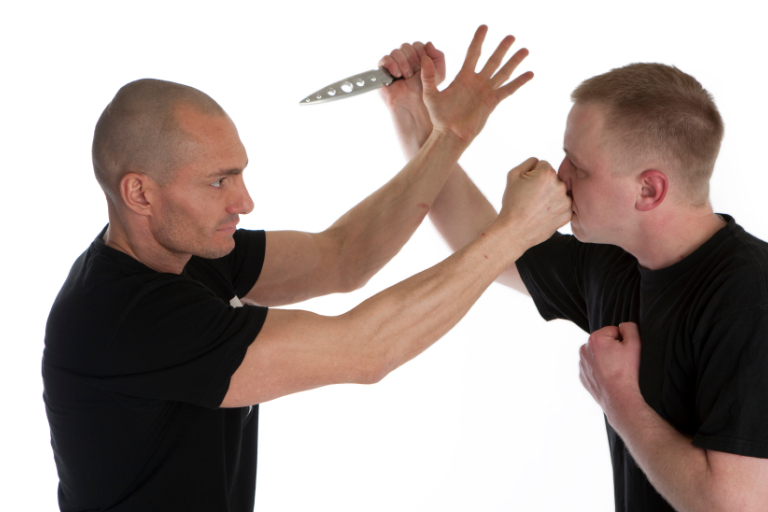
A. Target Identification and Vulnerabilities
In order to effectively defend oneself with a knife, it is essential to be able to identify the vulnerable areas of an attacker. Understanding the human anatomy and locating areas that are more susceptible to damage can greatly increase the chances of successfully incapacitating an opponent.
- Recognizing Vulnerable Areas of an Attacker
- Focus on vital areas such as the throat, eyes, temple, groin, and major arteries.
- Assess the target’s stance, posture, and exposed areas to plan effective strikes.
- Understanding the Importance of Accuracy and Precision in Strikes
- Precision in targeting vulnerable areas is crucial, as it maximizes the impact of each strike.
- Practice control and finesse to deliver targeted strikes accurately.
B. Effective Striking Techniques with a Knife
Once the vulnerable areas are identified, knowing the proper techniques for using a knife as a weapon is essential. Different striking motions and choosing the appropriate target areas can make a significant difference in the effectiveness of each strike.
- Thrusting and Slashing Motions for Maximum Impact
- Master the technique of thrusting the knife with force, using the body’s natural movements to generate power.
- Incorporate slashing motions for wider-range attacks and to disorient the opponent.
- Targeting Vital Areas for Incapacitation
- Aim for vulnerable areas mentioned earlier to incapacitate the attacker quickly.
- Employ techniques that cause pain or damage to these vital areas to gain an advantage.
V. Training and Practice
To effectively use knife defense techniques, it is important to acquire proper training and practice under expert guidance. Regular training and honing of skills through supervised practice sessions are crucial to be well-prepared for real-life self-defense situations.
A. Importance of Proper Training and Guidance
- Seeking Professional Instruction
- Find reputable self-defense instructors who specialize in knife defense techniques.
- Professional guidance ensures proper technique, safety, and understanding of legal and ethical considerations.
- Establishing a Foundation of Knife Handling Skills through Supervised Practice
- Focus on mastering the basic knife handling skills, such as grip, footwork, and positioning.
- Practice under the supervision of an instructor to receive corrections and guidance.
B. Maintaining Consistent Training and Honing Skills
- Regular Training Sessions to Improve Proficiency
- Commit to regular training sessions to maintain and improve skill levels.
- Training drills should focus on technique, speed, accuracy, and reaction time.
- Participating in Scenario-Based Drills for Practical Application
- Engage in scenario-based drills that simulate real-life self-defense situations.
- These drills help develop the ability to make split-second decisions and adapt to various scenarios.
Conclusion
Mastering knife defense techniques for self-defense requires a combination of offensive skills, proper training, and a clear understanding of legal and ethical considerations. Identifying vulnerable areas, developing effective striking techniques, and ongoing training are all integral to becoming proficient in knife defense. It is equally important to familiarize oneself with legal restrictions, seek professional instruction, and prioritize personal safety and the safety of others in self-defense situations. With the right knowledge and skills, individuals can enhance their personal safety and potentially deter or neutralize threats in a self-defense scenario.
